Over the years, managing content across websites, applications, and digital channels has never gotten easier. You need a powerful content management system (CMS) for that – and among the top contenders, Drupal vs Sitecore consistently lead the conversation.
Which one is actually better for your business needs, though? No worries; in this article, we’ll break down Sitecore vs Drupal across all the essential categories to help you decide with confidence:
- Content Management
- Ease of Use
- Scalability & Integration
- Responsive Web Design
- Multilingual Support
- Marketing Automation
- Security
- Pricing
Let's get started!
Drupal vs Sitecore: A Quick Glance
In general, Drupal and Sitecore are both powerful content management systems (CMS), though they cater to different needs and organizational structures.
Specifically, Drupal is an open-source CMS offering flexibility and extensive customization capabilities. Its modular architecture allows developers to build complex websites tailored to advanced requirements, powered by a vast community that contributes to its development by uploading modules, themes, etc.
Sitecore, on the other hand, is a proprietary CMS enterprise-level built on the .NET framework. It's widely recognized for delivering personalized digital experiences, integrating robust marketing tools, and providing comprehensive analytics. For that reason, Sitecore is particularly suited for large organizations seeking a unified platform for content management and digital marketing.
Drupal vs Sitecore: Which Is Better?
Drupal ultimately comes out on top as the more versatile and future-proof CMS for most businesses. Thanks to its open-source nature, unmatched flexibility, and modern API-first architecture, Drupal empowers organizations to build scalable, secure, and highly customized digital experiences without being locked into expensive vendor ecosystems.
To help visualize the strengths and weaknesses of each platform, here’s a quick Drupal vs Sitecore comparison summary before we go deeper:
Feature | Drupal | Sitecore | Winner |
Content Management | Highly customizable content types, workflows, and taxonomies | Structured system with reusable components and personalization | Drupal |
Ease of Use | Developer-focused, steeper learning curve | Intuitive visual editing and built-in templates | Sitecore |
Scalability & Integration | API-first, modular, widely extensible | Improved scalability with proprietary integrations | Drupal |
Responsive Design | Fully responsive theming and headless-ready | Device detection and real-time layout personalization | Tie |
Multilingual Support | 100+ languages out of the box with full translation control | 20+ languages, requires third-party services for complex needs | Drupal |
Marketing Automation | Requires integration with third-party tools | Comprehensive built-in marketing suite | Sitecore |
Security | Strong open-source model, community-reviewed patches | Secure-by-design via Microsoft’s ASP.NET infrastructure | Sitecore |
Pricing | Free to use with lower total cost of ownership | High licensing and implementation costs | Drupal |
Content Management (A Tie)
The Verdict
Between Drupal vs Sitecore, we can say both excel in different ways. Drupal shines in its flexibility and governance control, while Sitecore stands out for its polished, clean authoring experience geared toward marketing and enterprise teams.
To help you gain a deeper insight into how their strengths compare, let's break down Drupal vs Sitecore content management here.
Drupal content management
In general, Drupal offers a flexible content model where teams can define custom content types (such as articles, events, products, documentation pages, or even highly specialized formats unique to your organization). Each content type can be paired with its own fields and taxonomies, which paves the way for fine-grained control over how content is stored, related, and presented.
Specifically, rather than forcing you into a rigid process, Drupal gives you the building blocks to define your own workflows. For example, a university could set up a content pipeline where department heads, legal teams, and web editors all have distinct roles and approval responsibilities. The great news is that such an impressive level of control comes standard.
Another key strength is workflow configuration, which is deeply embedded in Drupal's architecture. You can define what states a piece of content moves through (e.g., Draft → In Review → Needs Revision → Published) and who's allowed to move it between those states. That way, you can ensure content isn't published until it meets all internal standards, reducing risk and improving accountability.

Furthermore, Drupal tracks every revision and allows you to compare versions or revert when necessary. Editors can comment inline on specific text, and access controls ensure that only authorized users can make changes or publish updates. For globally distributed teams or organizations with multiple content stakeholders, this creates a reliable, auditable content workflow.
On top of that, Drupal supports multichannel content delivery out of the box. Its API-first approach (via REST, JSON:API, or GraphQL) makes it easy to serve content anywhere – be it web, mobile, or external applications – which is ideal for headless CMS use cases.
Sitecore content management
Likewise, Sitecore is built to manage large volumes of structured, personalized, and multilingual content at scale.
At its core, Sitecore supports a hierarchical content model, which allows you to manage everything from simple text pages and blog posts to complex landing pages, product catalogs, digital assets, and multi-site structures, all within a centralized system.
And since content is treated as a reusable asset, components like banners, calls-to-action, and rich media blocks can be created once and repurposed across multiple pages or campaigns. Thanks to this modular approach, your team can easily maintain consistency while reducing duplication of effort, especially when managing localized or campaign-specific content.

Another key strength of Sitecore is its deep integration between content and customer experience. Indeed, you have the option to tie specific content variants to audience segments, behavioral triggers, or geographies, so different users can see different versions of the same page depending on who they are or where they’re located.
Ease of Use (Sitecore wins)
The Verdict
Sitecore wins this Drupal vs Sitecore round for one clear reason: it is significantly easier for non-technical users to navigate and operate. In contrast, Drupal, while highly flexible, generally requires technical expertise to perform even moderately complex tasks.
This difference in Drupal vs Sitecore user experience becomes clear when we look at how each platform expects users to interact with it on a day-to-day basis:
Drupal ease of use
As you can already guess, Drupal still requires a decent level of expertise to use effectively beyond basic content editing.
Suppose a user wants to create a new content type (say, an “Event” with custom fields like start time, location, and speaker. This must be manually configured through the Content Type builder, including adding fields, assigning display formats, managing taxonomy terms, and configuring permissions. None of this can be done without at least a working knowledge of Drupal’s backend structure.
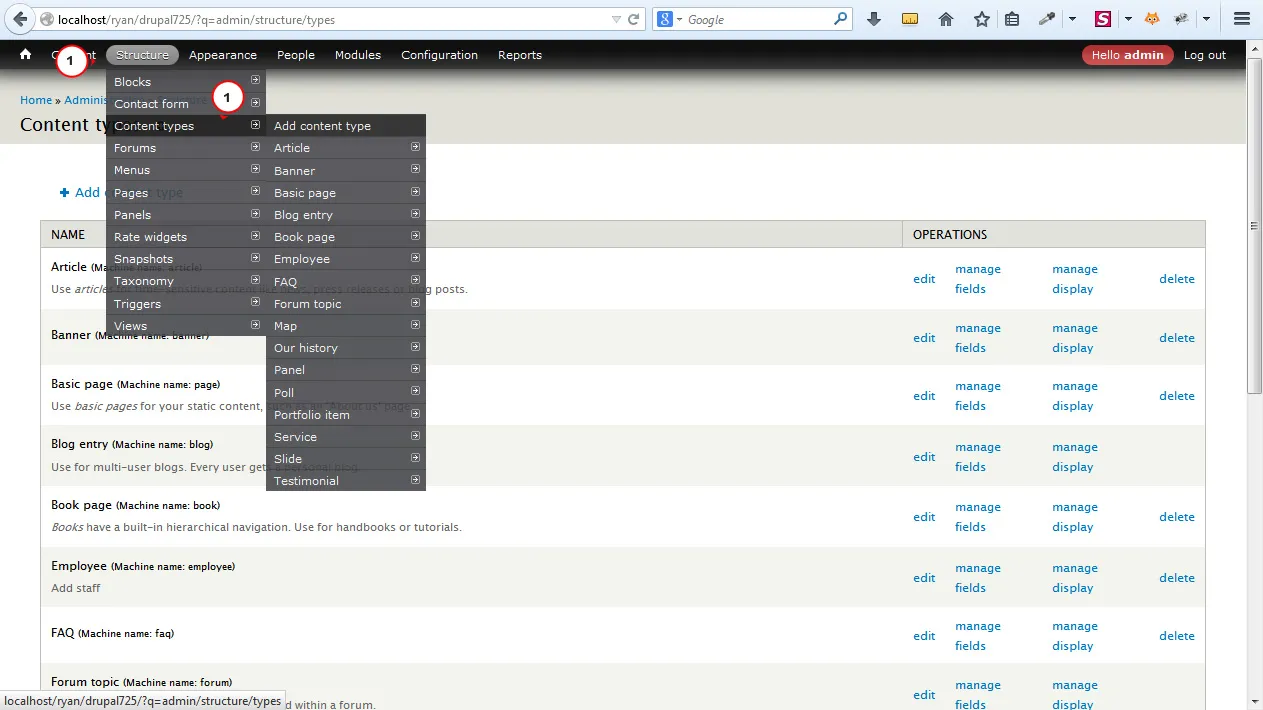
Also, as Drupal doesn’t come with a ready-to-use editorial workflow system, site builders must install and configure modules (like Workbench or Content Moderation) and define custom workflow states. Not to mention, concepts like “nodes,” “views,” “blocks,” and “regions” are core to the platform, but they are clearly not intuitive to most new users.
Sitecore ease of use
Sitecore, by contrast, is built specifically to reduce dependency on developers for day-to-day content management. The platform provides a polished, structured editing experience where users can create, edit, and publish content using visual tools, without needing to understand how the system is built behind the scenes.
For example, Sitecore’s Experience Accelerator editor allows users to edit directly on the live page preview (similar to drag-and-drop website builders), which clearly is a major usability advantage over form-based editors. A marketer can click on a text block, change copy, swap out an image, and publish all from the same screen without switching between admin and front-end views!
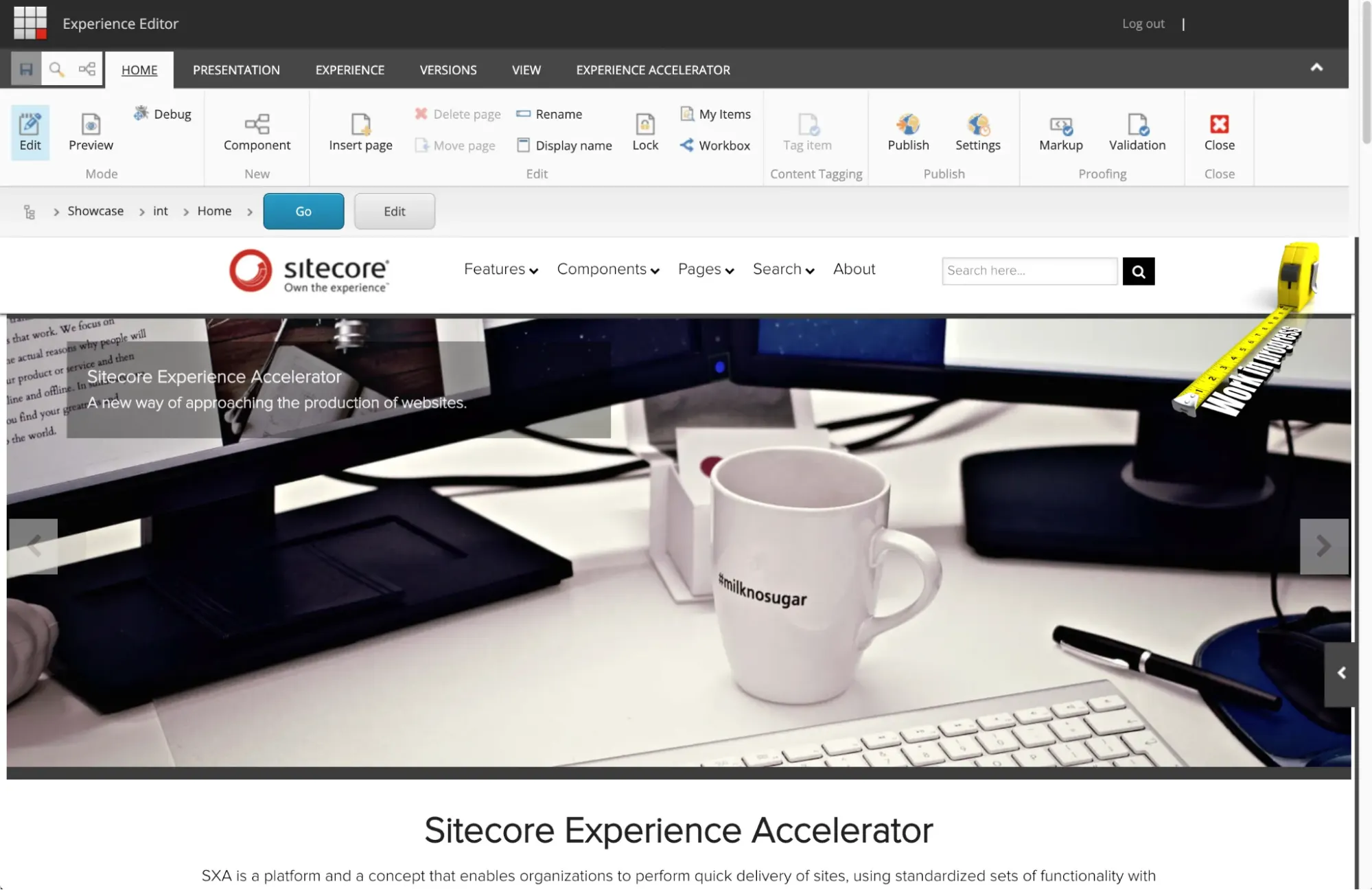
In terms of content setup, Sitecore comes with predefined templates and components, which are designed and configured by developers but then reused by editors with minimal risk. These templates define what content types exist (e.g., articles, banners, pages), how they are structured, and where each piece of content can appear. Editors simply fill in form fields or WYSIWYG areas, and the platform takes care of rendering everything in line with brand standards.
Scalability & Integration (Drupal wins)
The Verdict
Drupal comes out ahead, largely due to its API-first architecture and deep community-driven module ecosystem. While Sitecore has made significant improvements in architectural scalability, it still often requires more proprietary infrastructure and vendor reliance.
As you can see, both platforms are powerful in their own right, but they differ significantly in their approaches to scalability and integration. Let's discuss the specifics of Drupal vs Sitecore performance here.
Drupal scalability & integration
Drupal was designed from the ground up to be modular and extensible, with an architecture that emphasizes decoupling and third-party integration.
As primarily discussed, its API-first design (especially since Drupal 8) means that every piece of content is exposed via RESTful endpoints, JSON: API, or GraphQL. As a result, Drupal easily functions as a headless CMS or integrates into microservices-based ecosystems, which is critical for organizations scaling across multiple front ends or delivery channels (e.g., mobile apps, kiosks, smart TVs).
In terms of real-world scalability, Drupal has been powering major websites like NBC Olympics and The Grammy Awards – platforms that need to deliver millions of page views during short, high-pressure windows.
These examples demonstrate Drupal's capacity to scale horizontally and handle dynamic content under load. Its ability to cache intelligently (via modules like Varnish or Redis) and serve static pages while processing dynamic requests concurrently gives it performance resilience even under heavy traffic spikes.
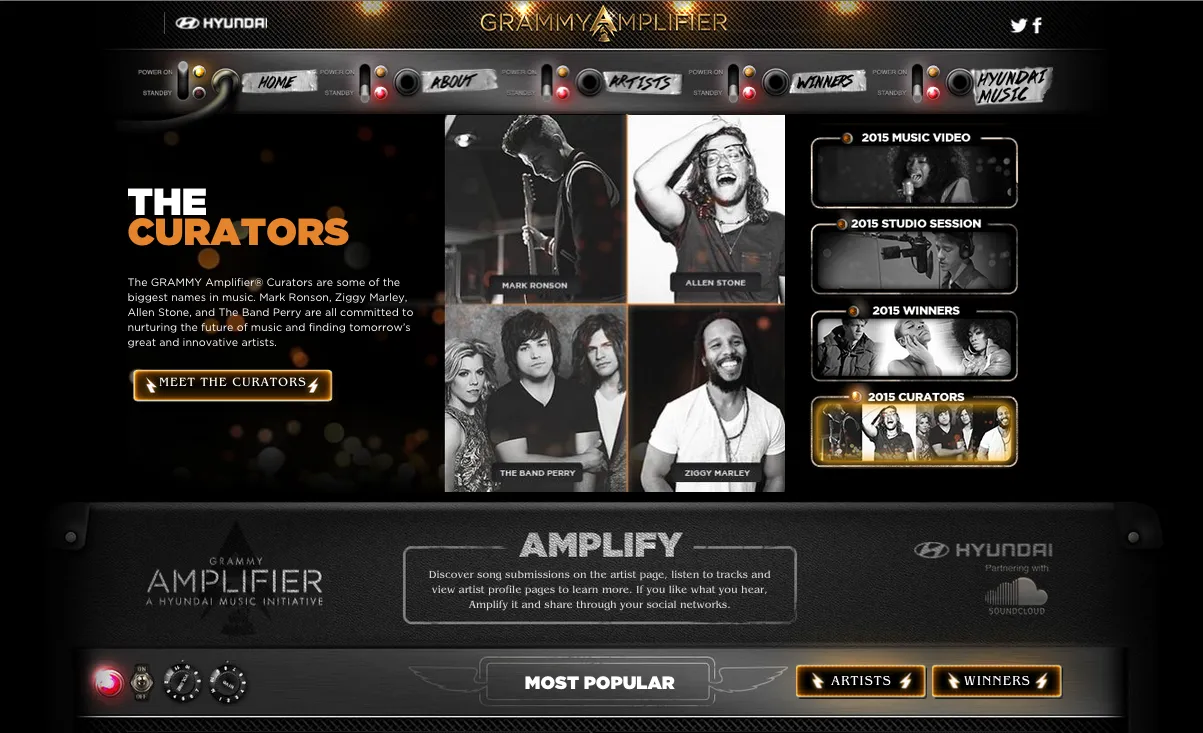
On the integration side, Drupal offers ready-made connectors for a wide range of systems. The Salesforce Suite module, for example, supports both one-way and bi-directional sync between Drupal content and Salesforce CRM data, which allows Drupal to serve as a frontend or portal layer for CRM-driven interactions. Other officially maintained modules allow smooth integrations with Mailchimp, Google Analytics, Marketo, HubSpot, and Facebook APIs, among many others.
Sitecore scalability & integration
Based on our research, Sitecore has historically faced criticism for performance complexity at scale. Fortunately, in recent years, it has taken clear steps to address this.
Its separation of content databases (Core, Master, and Web) improves data retrieval and publishing efficiency and reduces the load on any single system. Sitecore XP 10+ also supports containerization (via Docker and Kubernetes) and cloud-native deployments via Sitecore XM Cloud, which offers elastic scalability through Azure and other cloud platforms. Still, keep in mind that achieving that level of scale often requires significant investment in infrastructure and DevOps expertise, as well as licensing costs.
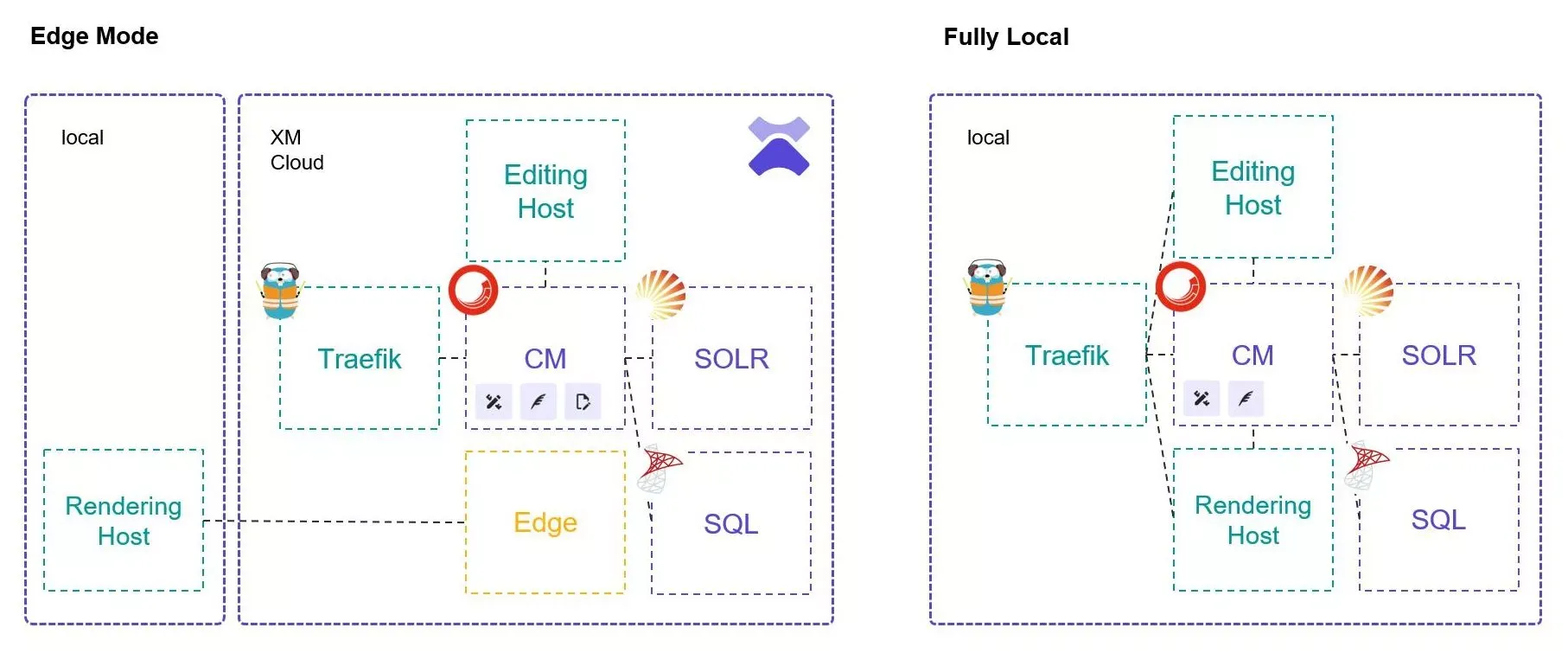
On another note, Sitecore falls slightly behind Drupal in terms of open integration.
Sure, Sitecore does offer Sitecore Connect, a suite of connectors for Salesforce, Microsoft Dynamics 365, and other enterprise tools. Nevertheless, these are often limited to predefined use cases and usually require customization for advanced workflows. For more complex integrations, Sitecore partners with members of its Technical Alliance Program, which are third-party vendors that provide integration services and, hence, require external consulting fees or development resources.
Also, unlike Drupal's open module ecosystem, Sitecore integrations are not as broadly community-maintained. Plus, its marketing suite (Sitecore XP), while powerful, is built to work best with Sitecore's native tools. For example, its email marketing, personalization, and analytics tools are tightly integrated but don't plug in easily with external marketing stacks like HubSpot or Marketo without middleware or custom code.
Responsive Web Design (A Tie)
The Verdict
Drupal allows teams to build highly customized, mobile-optimized websites from the ground up using responsive themes and layout tools. Sitecore, meanwhile, delivers more out-of-the-box functionality aimed at dynamic content optimization across devices, driven by real-time user data and device detection.
In essence, Drupal vs Sitecore systems are capable of delivering mobile-first digital experiences. Here’s how their approaches look in practice:
Drupal responsive web design
From the moment a site is architected, developers can use base themes like Bootstrap or Bartik, which are built with CSS media queries and flexible grid systems. These frameworks automatically scale and rearrange content for different devices, giving developers control over every breakpoint and layout shift.
Furthermore, developers can define custom breakpoints for different devices and even serve alternate components depending on screen size. Likewise, navigation systems can be adapted for mobile through contributed modules that reformat menus into collapsible or touch-friendly designs.

The best part? These features are not limited to superficial appearance. Because Drupal is API-first and often used in headless configurations, it also supports delivering responsive front ends through decoupled JavaScript frameworks like React or Vue, which ensures mobile optimization extends to app-like experiences.
Sitecore responsive web design
Meanwhile, Sitecore takes an automation-centric approach to responsive design by focusing not just on layout adaptation but also on real-time content targeting.
It comes with built-in device detection, powered by a cloud-based service that recognizes hundreds of device characteristics ranging from screen size and resolution to operating system and browser type. Thanks to this, content editors can serve different content blocks, templates, or assets based on the specific device being used, all without changing the underlying content structure.
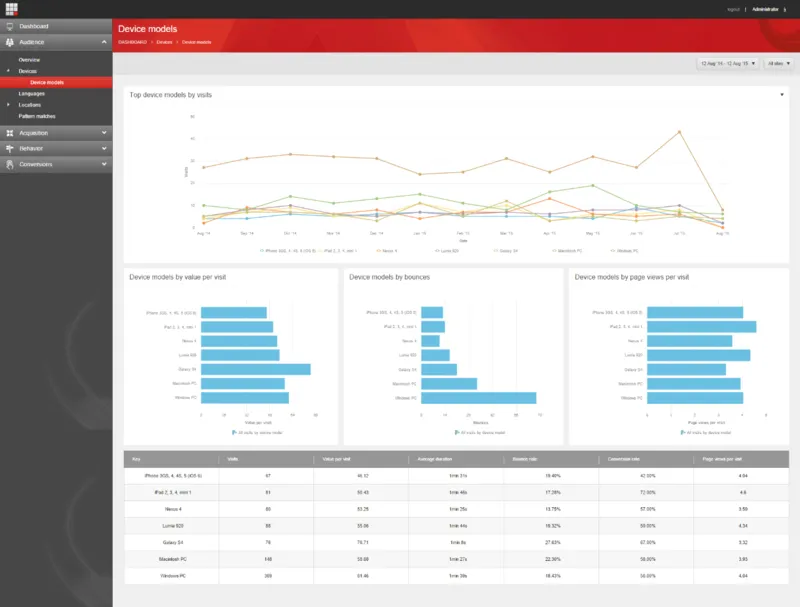
In addition to standard responsive layouts (which can be implemented using frameworks like Bootstrap or custom HTML/CSS), Sitecore also enhances mobile experience through its personalization engine. Using GeoIP data and behavioral analytics, the platform can display region-specific content or change layouts dynamically for different user segments. For instance, a visitor accessing a site from a mobile device in Tokyo may see not only a mobile-optimized layout but also language-specific content and promotions relevant to that location.
This automation is managed through Sitecore’s rules-based editor, which allows marketers to set conditions like “if device is mobile” or “if screen width is below X,” then show alternate versions of components or even redirect to a different experience entirely. The front end still relies on standard responsive frameworks, but the experience is layered with contextual intelligence that can’t easily be replicated by code alone.
Multilingual Support (Drupal wins)
The Verdict
With support for over 100 languages out of the box, Drupal offers a robust and flexible framework for creating multilingual websites. Its core modules provide comprehensive tools for translating content, configuration, and the user interface.
To further understand the strengths and limitations of each platform, let's delve into how Drupal vs Sitecore handles multilingual support:
Drupal multilingual support
Drupal has long been recognized for its strong multilingual capabilities. It supports over 100 languages out of the box, even including right-to-left text direction languages like Arabic, Hebrew, and Farsi.
Furthermore, the platform includes four core modules dedicated to multilingual functionality: Language, Interface Translation, Content Translation, and Configuration Translation. These modules enable comprehensive translation of every part of a site, such as content types, fields, menus, blocks, taxonomy, users, contact forms, comments, and more.

Sitecore multilingual support
Meanwhile, Sitecore offers multilingual support through its XM Cloud platform. The default language is English, but users can add extra languages to their environment by selecting from predefined languages or creating custom ones. Plus, Sitecore also offers language fallback mechanisms to ensure that if a translation is missing, the system can display content in a fallback language.

Nevertheless, setting up multilingual support in Sitecore sometimes involves additional configuration steps and, for more complex operations, requires integration with third-party translation services. In short, organizations may need to invest additional time and resources to achieve the same level of multilingual functionality that Drupal offers natively.
Marketing Automation (Sitecore wins)
The Verdict
Sitecore is purpose-built to support sophisticated marketing strategies through features like automated customer journeys, real-time personalization, deep analytics, and machine learning-based optimization.
By contrast, Drupal offers a flexible but more fragmented marketing experience.
In simpler terms, Drupal favors a modular ecosystem with open-ended tool choices, while Sitecore delivers a tightly integrated marketing suite. Let us break down how this Drupal vs Sitecore difference plays out in real use.
Drupal marketing automation
Drupal's marketing capabilities depend on its open and integration-friendly architecture rather than native toolsets.
Out of the box, Drupal does not offer a unified marketing automation system, audience segmentation tools, or performance dashboards. Instead, marketers typically extend Drupal’s functionality through modules and third-party marketing platforms such as HubSpot, Marketo, Salesforce Marketing Cloud, or Mailchimp.
On one hand, this allows organizations to build a highly customized stack. Still, such a fragmented setup also means marketers must manage multiple platforms and ensure consistent data flow between them, which is usually quite a challenging task without a proper workflow.
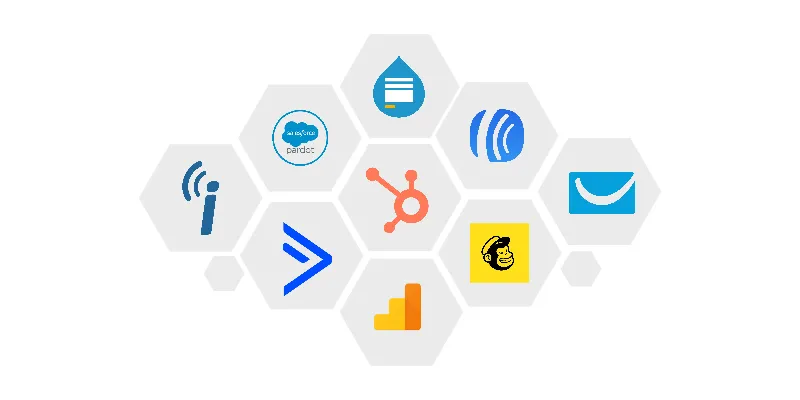
Sitecore marketing automation
On the contrary, Sitecore delivers an all-in-one digital marketing platform built to centralize content, customer data, personalization, and campaign automation.
Specifically, through the Sitecore Experience Platform (XP), marketers have direct access to tools for journey mapping, multivariate testing, behavioral tracking, and dynamic content targeting. There are no external tools required!
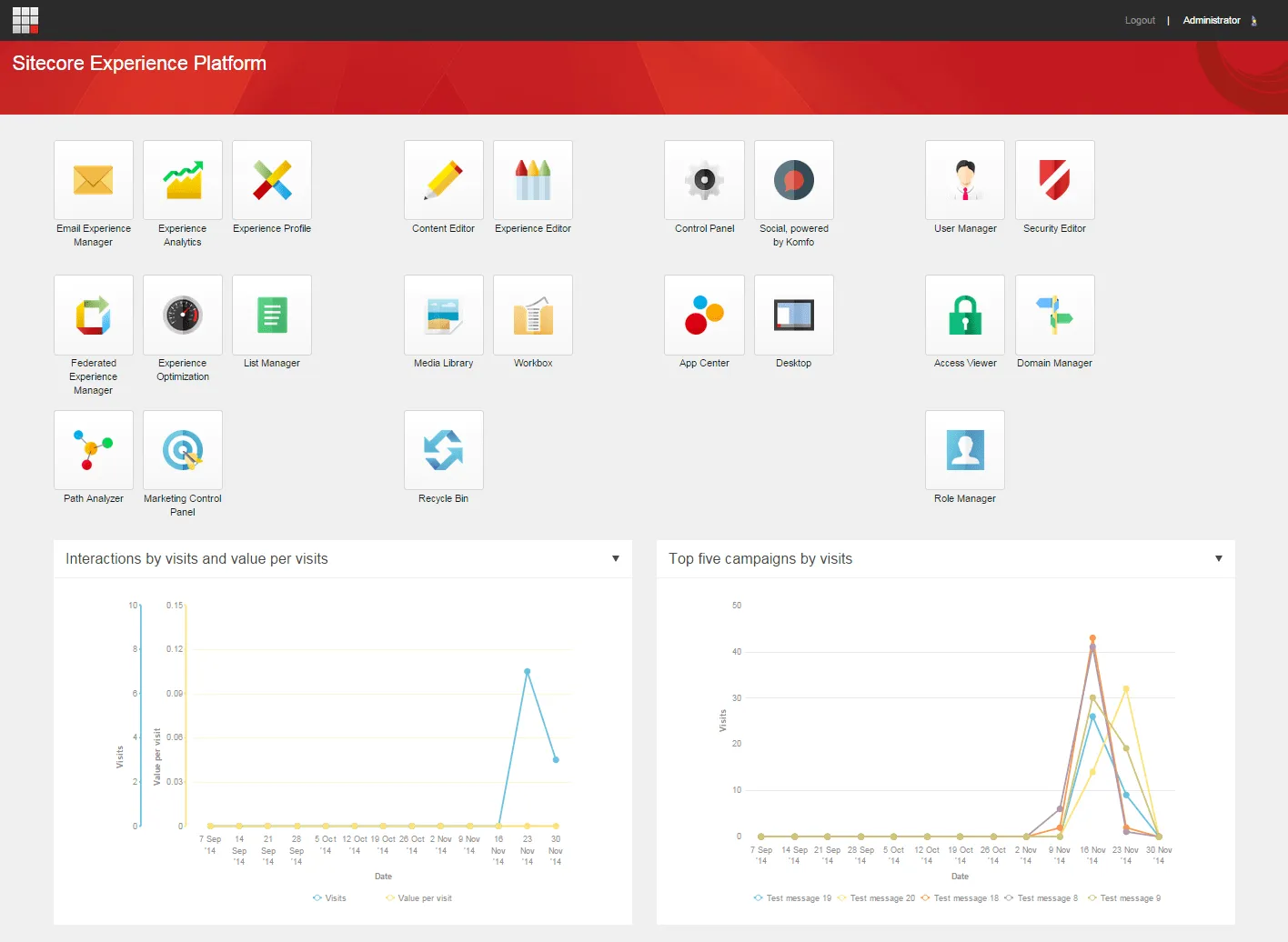
Real-time personalization for advanced marketing campaigns is also one of its core strengths. Using the Experience Database (xDB), Sitecore tracks user behavior across sessions and channels, building detailed profiles that can be used to personalize experiences instantly. Marketers can create rules like “show product variant B to returning visitors from the US who clicked a previous campaign,” all configured via a visual rule editor without coding.
Security (Sitecore wins)
The Verdict
Sitecore holds an advantage due to its integration with Microsoft's robust security infrastructure and its comprehensive security hardening practices. Drupal's open-source nature, on the contrary, can introduce variability in security practices.
Curious how Sitecore has an edge in this Drupal vs Sitecore showdown? In the section below, we will look into how each platform addresses security concerns:
Drupal security
As expected, Drupal's security model is mostly rooted in its open-source community.
A dedicated security team, comprising volunteers and contributors, actively monitors and addresses security vulnerabilities. The team follows a transparent process, issuing public security advisories and coordinating with module maintainers to patch identified issues.
Nevertheless, keep in mind that the platform's modular architecture and extensive customization still introduce risks. Therefore, maintaining a secure Drupal site requires proactive management and a thorough understanding of its components on your part.
Sitecore security
How about Sitecore?
From our observation, the platform's security advantage stems from its integration with Microsoft's ASP.NET framework.
This foundation provides built-in security features such as authentication, authorization, and data protection mechanisms. Plus, regular updates from Microsoft ensure that the underlying infrastructure remains resilient against emerging threats.
Sure, no system is immune to vulnerabilities, so we can not say for sure that Sitecore is 100% safe. Nevertheless, Sitecore's secure-by-design philosophy, combined with a robust framework, still helps organizations maintain a strong security posture.
Pricing (Drupal wins)
The Verdict
As an open-source platform, Drupal has no licensing fees and offers full access to core and contributed features at no cost. And though development and maintenance require investment, total annual costs are surprisingly still lower than Sitecore.
How so? You can learn more about Drupal vs Sitecore's differences here:
Drupal pricing
Drupal is open-source and free to download, install, and use. There are no license fees at any stage, and the vast majority of contributed modules and themes are also free.
But, of course, one still needs to keep in mind the cost for development, customization, and ongoing support.
Specifically, a small to mid-sized Drupal site can cost between $5,000 and $15,000 to develop if built by an agency or freelance team. More complex sites with multilingual content, advanced integrations, or custom modules can reach $50,000 to $100,000+.
Meanwhile, ongoing expenses include hosting, maintenance, and security updates. Shared hosting may cost as little as $10/month, while managed hosting (like Pantheon or Acquia) typically ranges from $50 to $500/month, depending on scale. Furthermore, routine maintenance (including module updates, security patches, and minor improvements) can add up to $5,000–$20,000/year, depending on the support agreement.
Estimated annual cost for a typical mid-sized Drupal site (including development amortized over 3 years, hosting, and maintenance): $15,000–$35,000/year.
Sitecore pricing
On the other hand, Sitecore follows a proprietary licensing model, which makes it significantly more expensive from the outset.
Licensing alone typically starts at $40,000 per year, but enterprise implementations frequently cost much more; some organizations pay $100,000 to $300,000+ per year based on traffic, features used, and number of environments.
In addition to licensing, implementation and customization costs are substantial. A typical Sitecore deployment with CMS, personalization, analytics, and integrations usually costs $100,000 to $250,000+ upfront. That includes developer time, solution architecture, infrastructure setup (often in Azure), and training.
And don't forget that ongoing costs also include support, updates, infrastructure hosting (if self-managed), and possibly third-party implementation partner retainers.
Estimated annual cost for a typical Sitecore implementation, assuming a medium-scale deployment with full features and basic support: $100,000–$250,000/year.
Drupal vs Sitecore Alternatives
We’ve already compared Drupal vs Sitecore head-to-head. However, if you’re looking to broaden your options – not just between these two platforms but also in relation to other major players in the CMS market – we’ve compiled the following comparison to help guide your decision:
Alternative CMS | Advantages over Drupal | Advantages over Sitecore | Limitations |
WordPress | Easier to use; massive plugin ecosystem | More affordable; lower learning curve | Less flexible for enterprise or complex content structures |
Adobe Experience Manager (AEM) | Stronger enterprise marketing tools; seamless Adobe integration | More robust DAM and personalization features | Extremely expensive; steep setup and operational learning |
Contentful | Headless-first; better suited for modern app-driven ecosystems | Lightweight; faster deployment with fewer dependencies | Requires developers for almost everything; no visual editing |
Joomla | Simpler to use out of the box | Open-source with enterprise add-ons | Smaller community; fewer high-end integrations |
Kentico Xperience | Lower TCO; hybrid CMS with marketing features | More flexible than Sitecore at a lower price | Smaller user base; fewer integrations than Drupal or AEM |
Drupal vs Sitecore: FAQs
Is Drupal similar to Sitecore?
Not exactly. Though both are CMS platforms, Drupal is open-source and highly customizable, whereas Sitecore is a proprietary solution with integrated marketing features.
What are Sitecore and Drupal?
Sitecore is an enterprise-level CMS known for its personalization and marketing tools. Drupal is an open-source CMS favored for its flexibility and scalability.
Is Drupal the best CMS?
Drupal is indeed among the top CMS platforms, especially for complex, content-rich websites requiring customization. Still, the "best" CMS depends on specific project requirements.
What is the disadvantage of Sitecore?
Sitecore's main drawback is the unexpectedly high licensing costs, which might not be ideal for smaller organizations.
Drupal vs Sitecore: Which One Is Best for Your Business?
So, at the end of the day, you must be wondering which one of these two platforms, Drupal vs Sitecore, is the best match for your business.
Here's the key takeaway:
- Choose Drupal if your organization needs full control over content structure and workflows. It's ideal for higher education, government, and media organizations that require deep content governance and headless delivery.
- Choose Sitecore if you're a large enterprise focused on delivering personalized digital experiences at scale. Plus, Sitecore shines when marketing automation, real-time personalization, and centralized analytics are core to your strategy.
For more tips, check out our blog or join our Facebook community.

